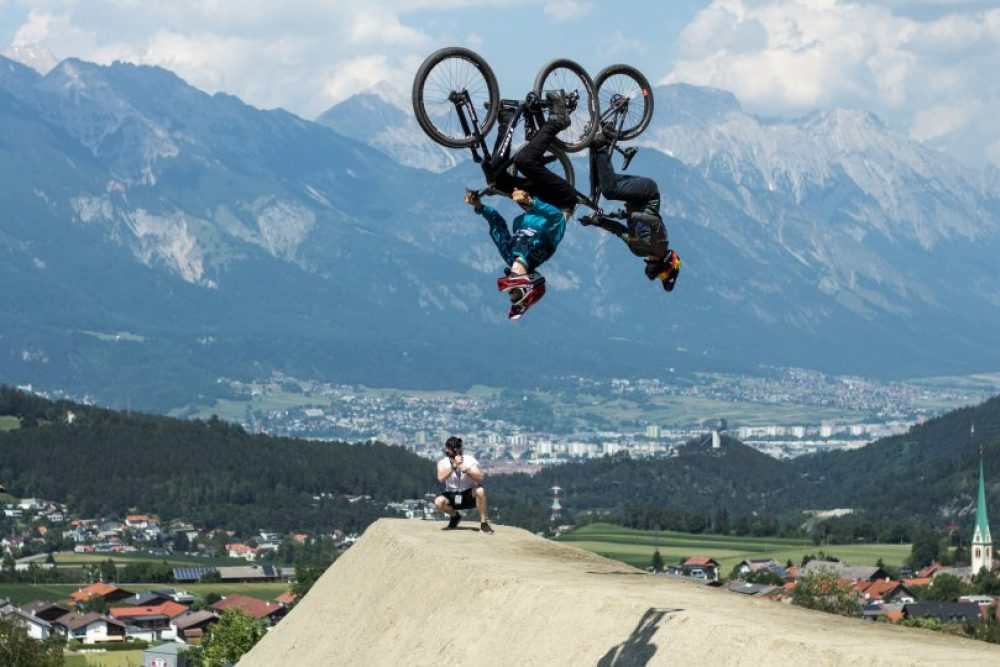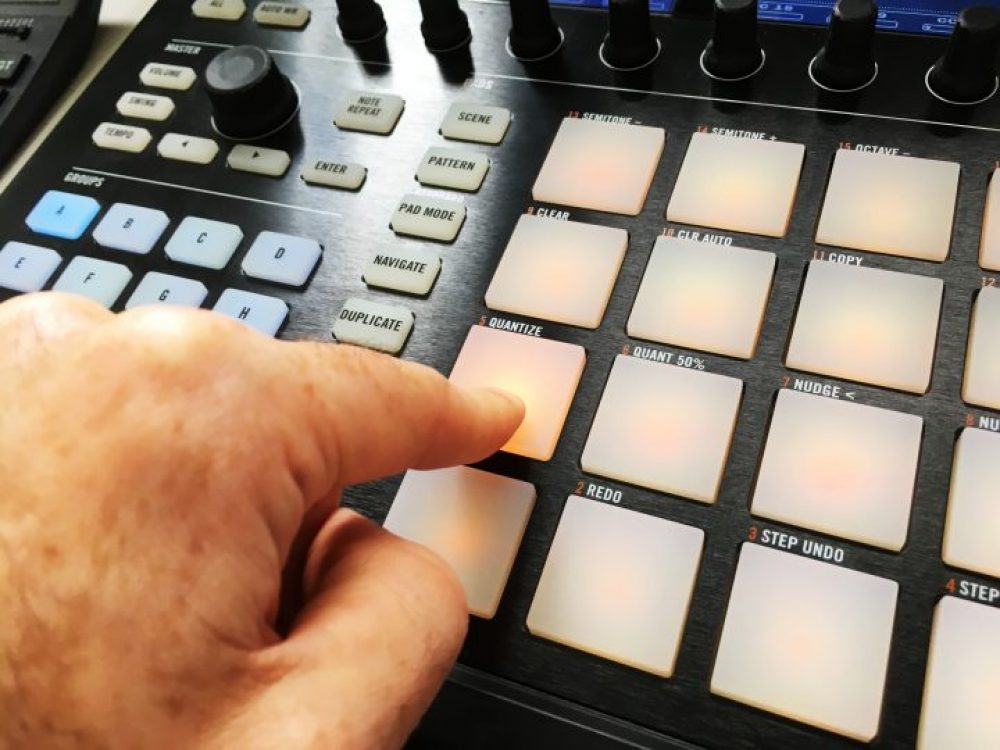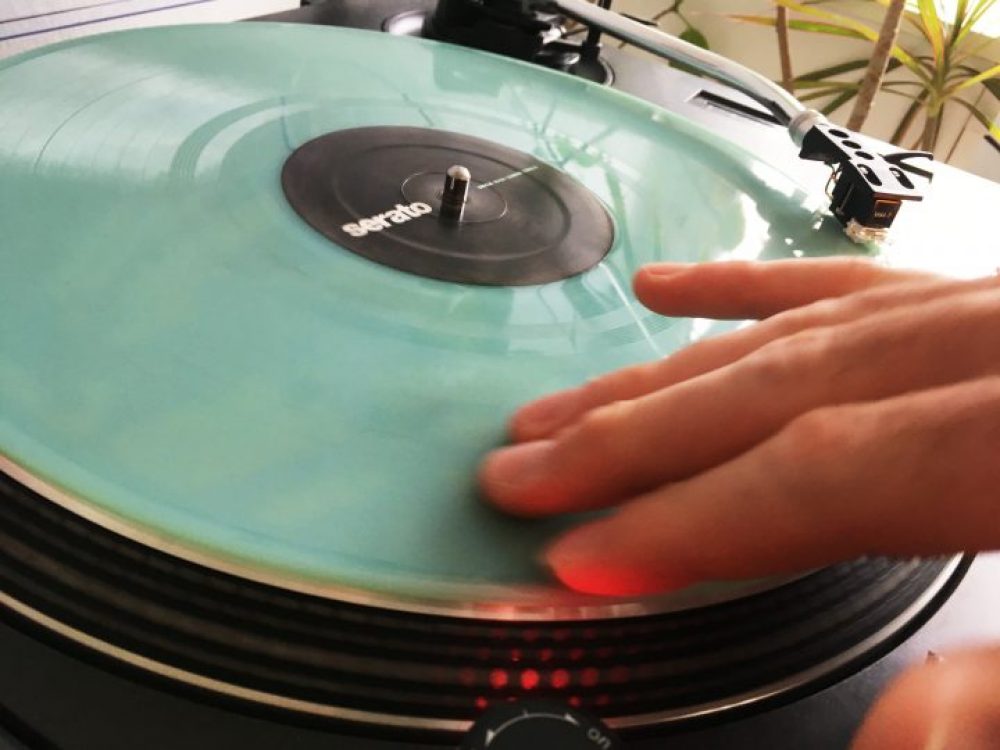I love the contrast between live recordings and electronic sounds and this technique was used when I produced the music for the Crankworx aftermovie.
It was an amazing event! Four days of filming with Max Schneider was full on, but worth it to get as many great shots as possible.

My favourite photo taken by Max Schneider.
For the music, I chose Hip Hop as a starting point. I used three old skool style beats that I layered. To me, this sound is real Hip Hop, not a lot of the stuff that is released today and filling up the charts. The likes of J Dilla, DJ Premiere, A Tribe Called Quest, Pete Rock and many other greats are my inspiration.
There is a huge choice of royalty free music online, but finding something with quality that fits precisely to the video is difficult. Also, I have experienced copyright issues on YouTube when using music that was purchased from popular and legitimate royalty free music websites.
Following a meeting with Chris and Monica from Innsbruck’s digital marketing team, we came up with the idea of creating music specifically for each video and the Crankworx 2017 video is the first of this kind. I have been involved with music since the age of eight and producing for the last decade, so this was no problem for me and brought more excitement to the project. This makes the whole experience of the videos special and unique for the viewers, which is my goal as a filmmaker.
Building the track
The track was built using synthesisers, drum machines and samples within Apple’s Logic Pro software, as well as Native Instruments’ Maschine. The Maschine is also a fantastic piece of hardware for sampling, chopping and playing samples them back into the software. This is what I did with the Cello played and recorded by Florian Andreas Giesa from Alte Musik Innsbruck.

Florian Andreas Giesa. Photo: Ulrich Cordes.
Baroque Cello
Florian played and recorded “Bach Cello Suite No. 4” using the Baroque Cello, just like it was played a few centuries ago. Florian explained to me that the Baroque Cello is de-tuned so every not is half a note lower than “normal”. This was interesting and very important when writing the melodic parts of the track.

Florian playing some excellence on the Baroque Cello. Photo: Gunter Natschläger.
I scanned the Cello recording and picked the parts I thought would fit best and after an hour or two of jamming on the Maschine, I had what I wanted.

Activating Cello samples on the Maschine. Photo by me.
Completion
I then added all the other parts of the track. I recorded extra some atmospheric sounds at the event such as bikes and the start gate which I used for percussive elements and general ambience.
The last thing I did was recorded some scratching using vocals, beats and of course the Cello from the track using Serato. Pack in the 90s a dub plate would have to have been pressed in order for this to happen, with today’s technology, it is much quicker, easier and cheaper.

Using Serato to scratch in some samples. Photo by me.
To finish, I polished the tracks with some EQ, compression, delay and reverb, then I put the icing on the cake with mastering.
This mix of classical music with modern is not everyone’s cup of tea, but I love it and it works very well with the video. Thanks to Florian for the lovely Cello playing, Philipp Haider at Alte Musik Innsbruck for connecting us and Chris Steger at Innsbruck Tourism for the initial idea.
Video credits go to Max Schneider for helping me film and the helmet cams provided by pro riders Martin Söderström and Barry Nobles.
Follow more of my filmmaking and music production adventures on Instagram and Facebook
External content is hidden due to privacy reasons. It will be embedded after consent is given in the privacy settings.










